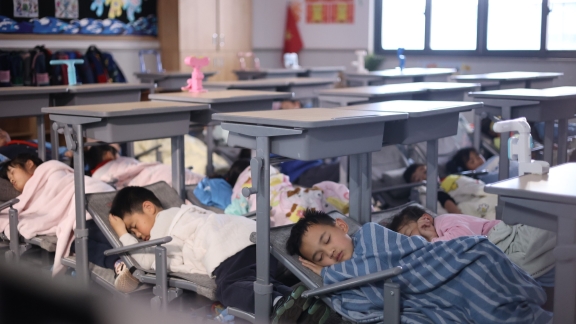wherearewegoing.net – In recent years, the concept of napping in class has gained significant traction in China, with schools across the country implementing innovative solutions to ensure students get the rest they need during the school day. This trend is driven by a growing awareness of the importance of sleep for academic performance and overall well-being.
Innovative Solutions for Napping
Recliner Chairs and Convertible Desks
An increasing number of schools in China have upgraded their classroom furniture to include recliner chairs and desks that can be converted into beds. These modifications allow students to take short naps during the day, helping them to stay alert and focused during their lessons. This approach has been particularly popular in primary schools, where the physical and mental development of young students is a top priority.
Tents for Nap Time
Some schools have taken a more unconventional approach by allowing students to build tents in which to rest during nap time. This method has been praised for providing a healthier sleep environment, as students can lie flat on the ground, which is believed to improve the quality of their sleep2.
Benefits of Napping
Improved Academic Performance
Research has shown that napping can significantly enhance the performance of tired students. A study conducted in Jintan, China, found that midday napping, combined with adequate nighttime sleep, positively impacted students’ academic performance. This finding supports the idea that napping can be a valuable tool in improving educational outcomes.
Healthier Sleep Habits
The trend of napping in class also addresses the broader issue of sleep deprivation among Chinese students. With more than 60% of children aged between six and 17 sleeping less than eight hours a day, the Ministry of Education has called on schools to prioritize students’ sleep health. By incorporating nap time into the school schedule, educators aim to help students develop healthier sleep habits.
Challenges and Considerations
Implementation and Accessibility
While the benefits of napping in class are clear, there are challenges to its widespread implementation. Not all schools have the resources to provide recliner chairs or tents, and some may struggle to integrate nap time into their existing schedules without compromising on academic content.
Parental and Societal Attitudes
There is also a need to address parental and societal attitudes towards napping in class. Some parents and educators may view napping as a sign of laziness or a lack of discipline, which can hinder the adoption of this practice. Education and awareness campaigns are essential to change these perceptions and highlight the scientific benefits of napping.
Conclusion
The trend of napping in class in Chinese schools represents a significant shift in educational practices, prioritizing the well-being and mental development of students. By providing innovative solutions and addressing the challenges associated with implementation, schools can help students achieve better academic performance and healthier sleep habits. As research continues to support the benefits of napping, it is likely that this trend will continue to grow and evolve in the coming years.
